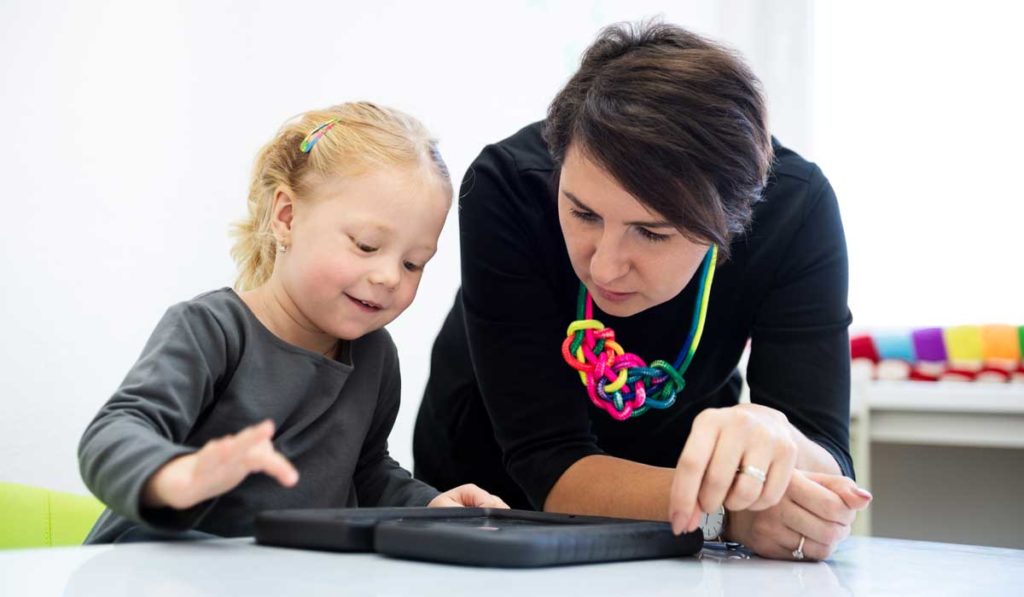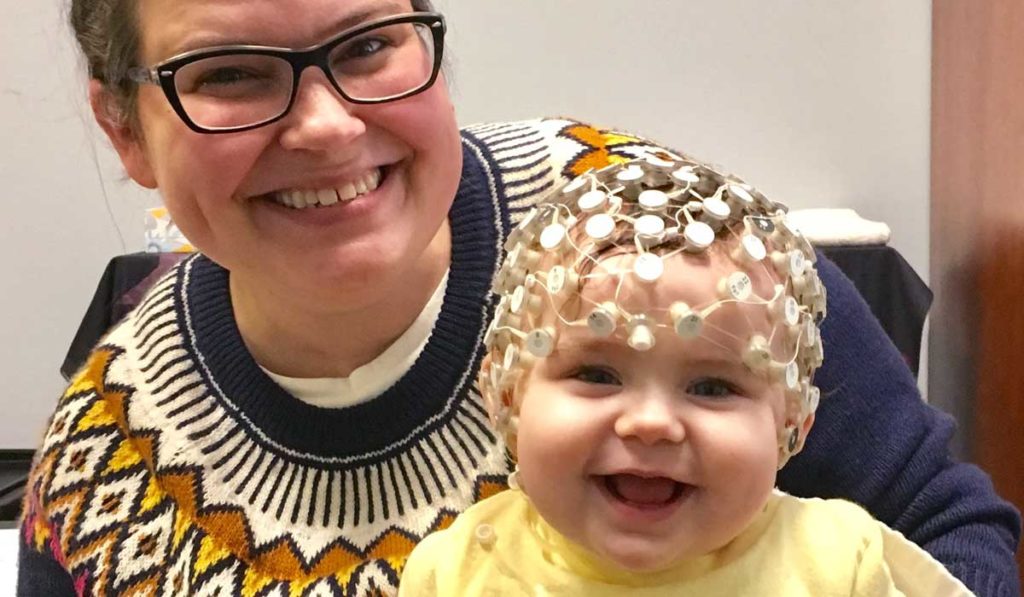Are children with poor musical rhythm at higher risk for speech or language disorders?
Researchers in the Music Cognition Lab at Vanderbilt University Medical Center have gathered evidence in support of such an “Atypical Rhythm Risk Hypothesis” and are putting it to the test. Their comprehensive review assembled data from an unprecedented 321 studies and sources and is publicly available on WIREs Cognitive Science.
“There’s a lot of evidence surrounding this relationship, but in different fields. We wanted to combine infant research with research around language disorders and rhythm training to make predictions and highlight questions still outstanding,” said corresponding author Enikő Ladányi, Ph.D., a postdoctoral research fellow at Vanderbilt.
Strong Connections
The review outlines shared biologic mechanisms for musical rhythm and speech/language processing, including overlaps in neural circuitry.
“One of the common mechanisms is neural entrainment,” said co-author Valentina Persici, Ph.D., a former visiting graduate student in the Music Cognition Lab. Entrainment occurs when oscillating brainwaves synchronize to an external stimuli such as a drum beat or sentence cadence. This process can be disrupted in speech or language disorders.
“Children with dyslexia have timing issues, both in rhythm production and rhythm perception,” Persici said. “There’s similar evidence in children with developmental language disorder and developmental stuttering.”
The review suggests atypical rhythm, due to problems with entrainment or other mechanisms, might be an overlooked risk factor for speech or language disorders.
Rhythmic Priming
Researchers can measure rhythm skills both behaviorally (using a metronome or drumkit, for example) and physiologically by electroencephalogram (EEG). Persici has been studying EEG data in typically developing children and those with developmental language disorders.
She is particularly interested in whether exposing children to regular rhythms right before a language task – a technique known as “rhythmic priming” – might improve linguistic performance in children with speech or language disorders. An earlier Vanderbilt study found rhythmic priming can improve grammar skills in young, English-speaking children.
“You can present a child with a regular, rhythmic sequence and look for the effect on language performance.” Persici said. “I’m looking at the neural measures when children listen to rhythm, but also linking those measures to their language performance, particularly syntax.”
Family GAMEs Study
Much of the existing data in support of the Atypical Rhythm Risk Hypothesis come from short-term studies. To test whether atypical rhythm really can predict speech or language deficits, Ladányi is conducting a broader, longitudinal study1 with Reyna Gordon, Ph.D., director of the Vanderbilt Music Cognition Lab in the Department of Otolaryngology Head and Neck Surgery.
“We are testing six to 12-month-old infants and their parents. Separately, we expose infants and their parents to simple audible rhythms and measure their brain responses with EEG. We track the infant’s language development via follow-up questionnaires to the parents, and then, when the infant turns three and four, they return to the lab for language tests,” Ladányi said.
The team plans to include over 100 infant-parent dyads in their Family GAMEs Study (for Grammar and Music Exercises for the Family), which is actively enrolling.
The researchers will also collect saliva samples to further test the heritability of rhythm and language skills. “We’re also including questionnaires about other potential risk factors, like socioeconomic status or bilingualism, music exposure, or family history of speech/language disorders. We will see what combination of all of these factors best accounts for language development,” Ladányi said.
Long-term Vision
The Music Cognition Lab has several studies ongoing to connect rhythm, speech and language. Both Ladányi and Persici emphasize additional longitudinal studies will be required before rhythmic priming becomes a true therapeutic option, or any kind of rhythm screening enters the clinic.
“We’d need screeners that are fun for children, and can be performed by anyone,” Ladányi said. “We can imagine a quick, computer-based screener including rhythm that can be done by children of all ages and abilities.”
Such a screener could help identify children with speech or language disorders earlier, as current diagnoses often happen too late, Persici added. She also noted that additional research is needed to confirm results showing musical stimulation can benefit children and adults with dyslexia or developmental language disorder. “Music seems to offer an advantage in language tasks,” she said. “We are working to understand why.”







